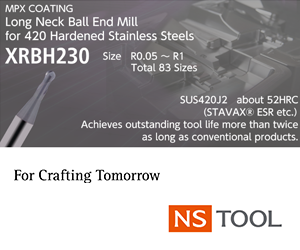Dear Doc: I cylindrical grind hardened-steel shafts and sometimes get chatter. There’s a debate on the shop floor, with some saying the wheel is dull and the material-removal rate is too high, and others claiming the wheel is not true. Is there a way to tell? Our 16 "-dia. wheel runs at 12,000 sfm and the workpiece at 40 rpm. I have counted about 70 waves of chatter on the workpiece.
The Doc Replies: There are two types of chatter. The first is forced chatter, where the chatter comes from some specific frequency, such as an imbalanced wheel, an out-of-true wheel or a bad bearing. The second is self-excited chatter, where “things just start bouncing around” at the natural frequency of the system. This is exacerbated by a dull wheel or a high mrr.
Here’s a quick way to determine the type of chatter you’re experiencing. Divide wheel rpm by workpiece rpm. In your case, the wheel is running at 2,866 rpm [(12,000 sfm × 12 in./ft.) ÷ (π × 16 in./wheel rev.)]. Therefore, the wheel-revolutions-to-workpiece-rotation ratio (2,866 ÷ 40) is 71.65. That’s awfully close to your count of 70 chatter marks per revolution, indicating an out-of-true wheel.
But be careful! It might just be self-excited chatter at 47 Hz (70 marks/rev. × 40 rev./min. × 1 minute ÷ 1 min./60 sec.). If it’s self-excited chatter, then it will always be at 47 Hz regardless of the grinding parameters. That’s because self-excited chatter occurs at the natural frequency of the system, and the natural frequency is constant—it doesn’t change when the grinding parameters change. If it’s forced chatter because of an out-of-true wheel, it will follow the wheel rpm.
Conduct a simple test. Decrease the wheel speed to 9,000 sfm (2,150 rpm). Now the wheel-revolutions-to-workpiece-revolution ratio is 53.75 (2,150/40). If you count about 54 chatter marks per revolution, it indicates an out-of-true wheel. But if it stays at 70 chatter marks, it indicates self-excited chatter.
Finally, 70 chatter marks on a workpiece running at 40 rpm correspond to a frequency of 47 Hz. If you have self-excited chatter, it’s occuring at a low frequency—most self-excited chatter occurs above 300 Hz—and indicates your machine is not as stiff as it should be.
Dear Doc: I go through tons of single-point dressing tools. I’ve tried diamond blade tools, and our operators say they give more consistent results. Why is that?
The Doc Replies: A single-point diamond is just a large diamond rock. When it’s new, the wheel contacts the tip of that rock, and the area of contact between the diamond and the wheel is small. That gives a sharp wheel.
As the diamond wears, the contact area becomes wider, meaning the diamond hits the grits more times. This dulls the grinding wheel. So, a nearly new diamond might have a contact region of 0.008 "×0.008 ", providing a sharper grinding wheel. At the end of its life, the diamond contact region might be 0.04 "×0.04 ", giving a duller wheel and increasing the risk of grinding burn and chatter.
With a blade tool, there are several smaller rocks in a row, with more rocks beneath them. One rock might be only slightly worn, having a width of 0.008 ". However, the rock beneath might be 0.02 " wide. As it wears, the wider rock might pop out, but there’s a newer rock beneath it. The result is a series of rocks, with the largest rock at any one time having a fairly consistent width and therefore dressing more consistently.
Related Glossary Terms
- chatter
chatter
Condition of vibration involving the machine, workpiece and cutting tool. Once this condition arises, it is often self-sustaining until the problem is corrected. Chatter can be identified when lines or grooves appear at regular intervals in the workpiece. These lines or grooves are caused by the teeth of the cutter as they vibrate in and out of the workpiece and their spacing depends on the frequency of vibration.
- dressing
dressing
Removal of undesirable materials from “loaded” grinding wheels using a single- or multi-point diamond or other tool. The process also exposes unused, sharp abrasive points. See loading; truing.
- grinding
grinding
Machining operation in which material is removed from the workpiece by a powered abrasive wheel, stone, belt, paste, sheet, compound, slurry, etc. Takes various forms: surface grinding (creates flat and/or squared surfaces); cylindrical grinding (for external cylindrical and tapered shapes, fillets, undercuts, etc.); centerless grinding; chamfering; thread and form grinding; tool and cutter grinding; offhand grinding; lapping and polishing (grinding with extremely fine grits to create ultrasmooth surfaces); honing; and disc grinding.
- grinding wheel
grinding wheel
Wheel formed from abrasive material mixed in a suitable matrix. Takes a variety of shapes but falls into two basic categories: one that cuts on its periphery, as in reciprocating grinding, and one that cuts on its side or face, as in tool and cutter grinding.









